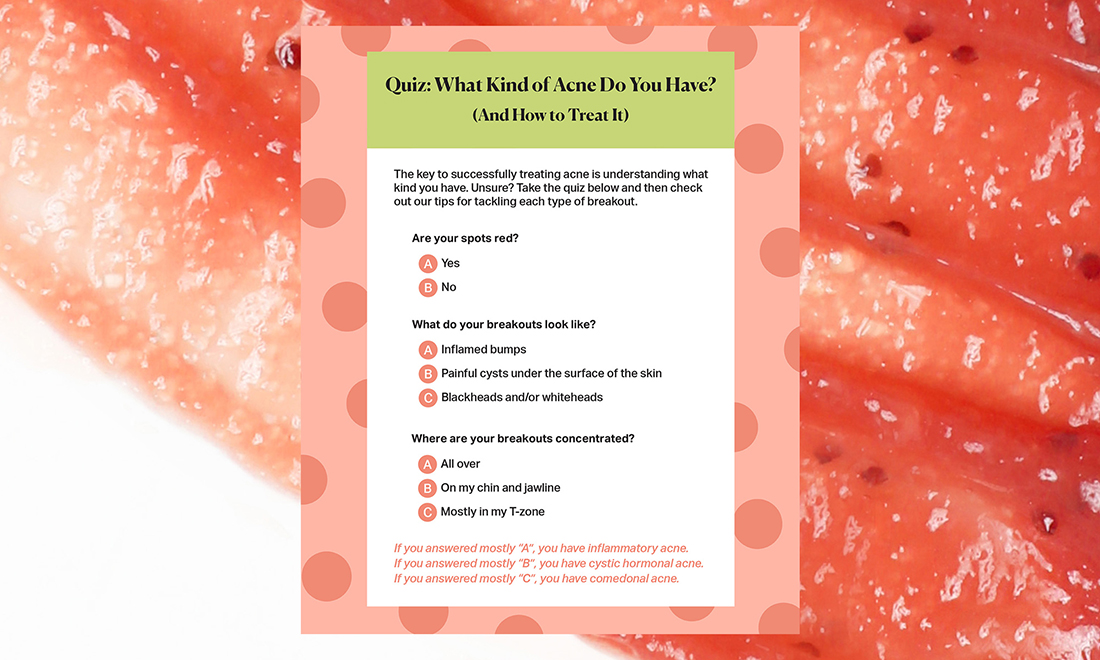The Klog made a zine! The limited edition handbook full of skin care tips, K-beauty trends, horoscopes, and more is available at our Soko House pop-up in New York. Can’t make it to the pop-up? Don’t sweat it. In our ‘Cheat Sheet’ series, we’re taking tips directly out of the zine and bringing them straight to you.
At The Klog, one of the most common questions we get is how to treat acne. Unfortunately, there’s no simple answer—acne is complex.
Whether it be inflammatory acne, cystic hormonal acne, or comedonal acne, each type of spots are treated differently. To be successful in getting rid of acne once and for all, you have to figure out what kind of acne you have, so you can then choose products formulated to treat it.
Don’t worry though – we made deciphering your spots simpler. Use our handy quiz below to diagnose your acne, and then check out our tips for treating each type of breakout!

Inflammatory acne is also known as pustules or papules. Using chemical exfoliants like AHAs and BHAs will help, but it’s important to also use an antibacterial spot treatment to really kill the bacteria efficiently. Some of the most well known antibacterial ingredients include tea tree oil, sulfur, and witch hazel.
Related: Acne Types and Treatments
Struggling with cystic hormonal acne? Never, ever attempt to pop a hormonal pimple! That’s because they’re really cysts that live deep down in your skin. Instead, treat the acne with a blend of products that contain ingredients that will exfoliate, kill bacteria, and reduce inflammation like salicylic acid, benzoyl peroxide, and tea tree oil.
For comedonal acne, the best type of treatment is exfoliation. This helps to avoid the buildup of dead skin within the pore, as well as aid in regulating oil production.














